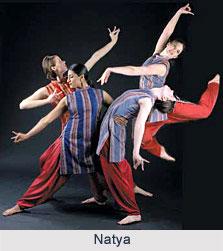 Traditional Indian theatre became an expression to reflect the unedited realities of life in the most expressive way. Although Indian theatre has its roots associated deeply with the verve of the ancient Vedic era ritualism yet it is in the medieval era with the introduction of the Traditional Indian Theatre, Indian drama further gained that maturity. For the very first time the varied Indian mythology and eposes of the Sanskrit theatre was rather rationalised. Gradually this established facet of Indian traditional theatre gained a coloured contour amidst the local and Indian folk theatre.
Traditional Indian theatre became an expression to reflect the unedited realities of life in the most expressive way. Although Indian theatre has its roots associated deeply with the verve of the ancient Vedic era ritualism yet it is in the medieval era with the introduction of the Traditional Indian Theatre, Indian drama further gained that maturity. For the very first time the varied Indian mythology and eposes of the Sanskrit theatre was rather rationalised. Gradually this established facet of Indian traditional theatre gained a coloured contour amidst the local and Indian folk theatre.
Elements of Traditional Indian Theatre
In traditional theatre ancient customs, age-old traditions and classical improvisations are ideally mingled to offer a rather contemporary tinge to Indian drama. The thematic development of Indian "natya" amidst the artistic techniques of Swang, Raslila, Indian drama, Jatra, Ankia Nat, Tamasha are therefore clearly reflected in the growth and development of the traditional Indian theatre. Song happens to be an important element in Indian society hence gradually it became the most dominant theme of the traditional Indian theatre form. Bit by bit monologue, dialogue, song, timber, music and dance all became an integral part of various types of traditional Indian theatre form. Traditional music became the means of expression and creativity therefore carved out a niche in the traditional Indian "natya" which has its roots deeply associated with ancient Indian culture, traditions and conventional Indian lifestyle. With the classical art form it is the very harmonious blend of sorrow, joy, love and all the realisms of life that later made the traditional Indian theatre a typical art form to stand apart amidst crowd.
Forms of Traditional Indian Theatre
Traditional theatre forms integrate not only the common man`s interests but there is also a classical element in them. In traditional theatre forms there are unique styles of dance representing the entry on to the stage or platform, narrative and descriptive roles. The best example of descriptive acting is the Bidapat naach. In this traditional theatre form, importance lies not only on beauty but on acting and narrative and descriptive skills. Dance as a narrative art is the foundation of theatre form which can be seen in the traditional theatre form of Bhavai of Gujarat. In this form, swift or slow foot movement is a means of narration. The art of making the entry by dancing has been perfected in the traditional Kashmiri theatre form, Bhand Jashn. In Koodiyaattam and Ankia Nat, the entry by dancing itself is complicated and inventive. In the forms, the rhythm and basic pose and gesture identifies the role of the character.
In traditional Indian theatre, age-old forms, customs and the aspiration to improvise are intermingled. It is usually when the important themes are enacted, that the acting restricts itself to traditional norms, not deviating from it. But, every time the theme inches towards the contemporary, the actors improvise as far as dialogue delivery is concerned. In traditional theatre forms there is no formal setup leading the entry or exit of the actors. Depending on the circumstances or context, the actors enter into the stage and enact their role without being officially introduced. In traditional theatre forms, there is always stability in its theme, composition and presentation. There is also a scope for improvisation and incorporation of new references leading to subtle extension in the story-line. There is direct and warm communication between the actors and the audience.
Influence of Traditional Indian Theatre
Traditional theatre forms have undeniably been influenced by industrial civilisation, industrialisation, and urbanisation. The development of traditional theatre forms is based on such local and regional peculiarities which are not bound and restricted by social and economic divisions, limitations, etc. In traditional theatre forms, characters keep altering their place on the stage to be more inspiring and to give the situation a greater implication. This technique also reduces the chance of monotony through repetition and stillness. Dialogues delivery is usually carried out in a high pitch which helps the actors to reach out to a larger audience.